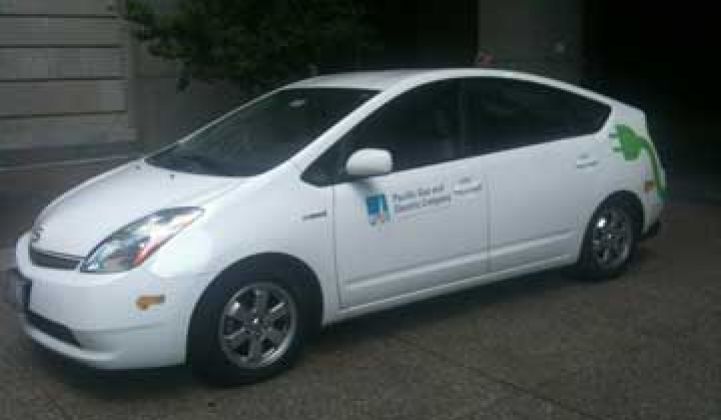A better car is about to roll off the production line. It’s not about a soft leather interior, or multiple DVD players so that your children don’t have to interact with each other or you (for better or worse); it’s about the fact that the car is electric. The Chevy Volt begins mass production on November 10, and as excitement builds as people imagine the future of personal transportation, it’s still precarious to look too far into the crystal ball.
“[The electric vehicle] is quiet, there’s faster acceleration, you never have to go to a gas station and there’s a potential to have cheap fuel,” Anthony Eggert, Commissioner for the California Energy Commission, said during opening remarks at Greentech Media’s Networked EV conference at Pacific Gas & Electric headquarters in San Francisco. And then Eggert added, “This is no sure thing.”
Although there is no guarantee that there will be approximately one million EVs on the road by 2020, the gathering of technology companies, regulators, utilities and startups at the Networked EV indicate that there is a push from many industries to see electric vehicles become an integrated part of the transportation, and energy, landscape.
“[Charging] has got to be simple. It’s got to be portable, and it’s got to be flexible,” said Kevin Dasso, Senior Director for Smart Grid and Technology Integration at PG&E, during his morning keynote address. And the charging, from the hardware to the where and when of plugging in, are the major challenges for the early adopters that will be driving EVs in coming months.
And yet, the first impacts will be very localized, according to Dasso. Adding an EV is the equivalent load of about an extra household. With uncontrolled charging, where people will plug in willy-nilly, it would cost PG&E about $150 million to $175 million for the first 100,000 cars. That cost is the last mile.
But it doesn’t need to cost hundreds of millions. That cost could be slashed by about 80 percent if people, through time-of-use rates, will charge off peak. But adjusting rates isn’t enough, said Dasso. It needs to be automatic. “It has to be easy for customers,” he said.
Although the focus throughout the conference is going to be on the marriage between the electrical grid and EVs, the first speakers set the tone that ultimately, it’s all about the customer -- and it is imperative to get it right with early adopters.
Some of the issues that will need to be sorted out in the coming months for a smooth transition for customers, according to David Leeds, Senior Manager for Smart Grid at GTM Research :
- Bidirectional communications standards between grids and vehicles.
- Sharing of best practices between utilities (both in terms of load balancing and time of use rates).
- Interoperability standards for smart charging software and applications.
- Support of in-home charging station integration.
- Public infrastructure development for cities.
- Remote and automated control via smart phone apps and/or home area networks.
As the first cars come into homes and on the roads, regulators, utilities and businesses are hoping that usage patterns will dictate how some of these issues are resolved.
“To succeed, it’s going to require collaboration,” said Eggert. “No matter what people might tell you, if customers don’t have a positive experience, there’s a real chance this will not take off.”



